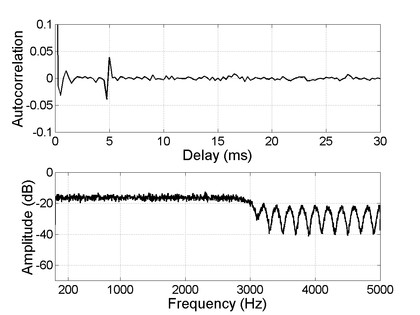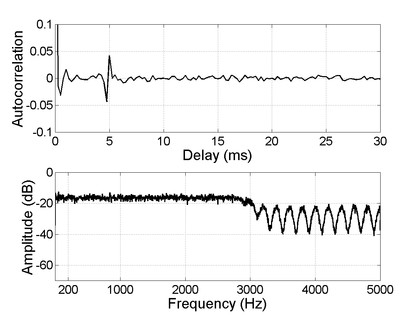

Two versions of the sound examples are provided here: the sounds used in the actual experiment that were sampled at 20 kHz; plus the sounds resampled at 44.1 kHz using Matlab. The 20 kHz version is probably best suited for displaying and analysing the sounds, the 44.1 kHz version should play on most platforms.
All sound sequences have the same structure: [KXX-ABX-pause] played three times, with different random realisations of KXX and ABX. The pitch shift effect described in the paper predicts that KXX should sound lower than ABX for the high periodicities, 200 and 400 Hz. This happens in spite of very similar waveform autocorrelation peaks for both stimuli.
Why would this be interesting? Well, even though we know that pitch
perception by humans is rather complicated, an intuitive belief is
that the pitch information is visible somewhere in power spectrum-like
or autocorrelation-like representations of the sounds. In the present
case, we get almost no difference in these representations when we
analyse the high-pass filtered versions of KXX and ABX. We do recover
a difference, however, after passing the stimuli through a very crude
auditory model (see full
text).
| KXX, 3 kHz high-pass, 200 Hz periodicity | ABX, 3 kHz high-pass, 200 Hz periodicity |
 |
 |